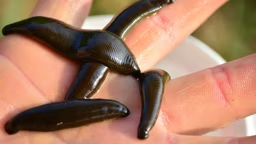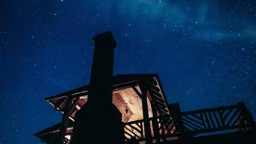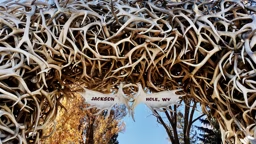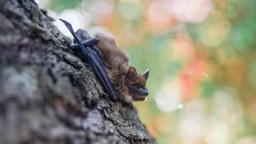The male hooded merganser has striking contrast in his bold patterns, accented by a white crest of feathers bordered on all sides by black. While the white crest is often held flat along the bird’s head, a drake may splay these feathers in a fanning display. He is quickly distinguished from similar ducks by his chestnut sides, a thin, pointed beak and his bright yellow eyes. The hooded merganser’s black feathers sometimes reflect iridescent color when the sunlight is strong and the angle is just right.
But to say the females are dull in coloration would not do them justice. Female hooded mergansers are similar to males in their zigzag curves but are adorned with an overall reddish brown hue. The accent in a female’s plumage is a spiked-up reddish crest.
By late winter, courtship antics make hooded mergansers a wondrous spectacle. Males congregate in flocks with a few females, and each male does his best to impress a hen with a display of vital fitness. The male, swelling his neck (much like a frog) and raising his brilliant white crest of feathers, emits a low, bellowing, two-syllable croak that is surprisingly loud.
But to say the females are dull in coloration would not do them justice. Female hooded mergansers are similar to males in their zigzag curves but are adorned with an overall reddish brown hue. The accent in a female’s plumage is a spiked-up reddish crest.
By late winter, courtship antics make hooded mergansers a wondrous spectacle. Males congregate in flocks with a few females, and each male does his best to impress a hen with a display of vital fitness. The male, swelling his neck (much like a frog) and raising his brilliant white crest of feathers, emits a low, bellowing, two-syllable croak that is surprisingly loud.
Although we will never know exactly what a bird sees, there is little doubt that the fittest males are bouncing colorful, iridescent beacons from their deeply black feathers, dazzling with their clean white crests, and wooing with every zig and zag. No doubt, the best croaks and brightest displays are not lost on the passing hen.
Then, each spring, a joyous event plays out all across the flooded (and not so flooded) forests that range the Upper Mississippi River Valley to the boreal forests of southern Canada: Fuzzy, downy hooded merganser ducklings leap from a nest box or a hole in a tree, splashing into the lake below or bouncing elastically from the impact with soft forest soils. After a little wobbling and regaining of balance, ducklings gather enough sense to run enthusiastically to Mom, peeping loudly all the while. If the nest is within the hills and rolling beauty of an upland forest, the mother quickly leads her young to the nearest lake or wetland. Here, she’ll raise another generation of the majestic sawbills.
Brian M. Collins spent two afternoons lying on his belly under wet camouflage burlap, amid melting ice and snow, to capture these images of hooded mergansers last March in northwestern Wisconsin. Believe it or not, it was a very fun time!
Then, each spring, a joyous event plays out all across the flooded (and not so flooded) forests that range the Upper Mississippi River Valley to the boreal forests of southern Canada: Fuzzy, downy hooded merganser ducklings leap from a nest box or a hole in a tree, splashing into the lake below or bouncing elastically from the impact with soft forest soils. After a little wobbling and regaining of balance, ducklings gather enough sense to run enthusiastically to Mom, peeping loudly all the while. If the nest is within the hills and rolling beauty of an upland forest, the mother quickly leads her young to the nearest lake or wetland. Here, she’ll raise another generation of the majestic sawbills.
Brian M. Collins spent two afternoons lying on his belly under wet camouflage burlap, amid melting ice and snow, to capture these images of hooded mergansers last March in northwestern Wisconsin. Believe it or not, it was a very fun time!
This winter, one of the most dapper of waterfowl may bring color and vitality to your favorite river, lake or patch of open water. The hooded merganser, one of the famed “sawbill” ducks, has a widespread winter range on the North American continent, absent only from the northern Great Lakes (where it returns early spring) and the central Great Plains.
Not only is it widespread, but this small diving duck also uses a great variety of aquatic habitats, making it more likely that its striking feather patterns and zigzag curves will pass by the lenses of your binoculars.
Not only is it widespread, but this small diving duck also uses a great variety of aquatic habitats, making it more likely that its striking feather patterns and zigzag curves will pass by the lenses of your binoculars.













